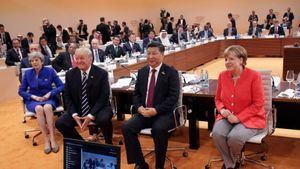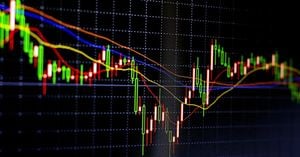China's role in global climate action has never been more significant as the international community faces mounting environmental challenges. At the forefront of discussions is the annual COP29 climate summit taking place in Baku, where nations are urgently strategizing on how to combat climate change. With the United States taking a backseat under its new leadership, China stands poised to fill the climate leadership void left by the U.S. under the administration of President Donald Trump. Trump has hinted at withdrawing from the Paris Agreement once again, posing new questions about global climate commitments.
This pivotal moment presents both challenges and opportunities for China, historically the world’s largest emitter of greenhouse gases and also its biggest investor in renewable energy. The dynamics at COP29 reveal global expectations for China to contribute more significantly to climate financing—especially as it expands both its renewable energy capacities and coal production. With those at the summit urging for stronger emissions reduction commitments from China, the world watches closely.
Experts note this is not just about reducing emissions, but also about setting concrete climate finance goals. The aim is to establish the New Collective Quantified Goal on Climate Finance (NCQG) to assist developing countries grappling with climate impacts. Economists stress the need for $1 trillion per year by the end of the decade to help these nations curb emissions and adapt to extreme weather consequences.
Traditionally, industrialized nations have been seen as the primary culprits behind climate change, and they are expected to contribute to international climate finance initiatives. Nevertheless, there’s growing pressure for China to step up, considering its economic stature and emissions profile. While China maintains its classification as a developing country, some analysts argue it should participate more actively due to the scale of its investments and emissions.
According to Yao Zhe, a policy analyst at Greenpeace East Asia, this moment could be hugely significant for China to cement its role as a climate leader. Yao emphasized, "It's certainly an important moment and a great opportunity for China to step in this leadership gap," pointing to the country's advancements in decarbonizing its economy as evidence of its potential commitment to global climate goals.
Despite Chinese representatives at COP29 indicating they favor voluntary commitments rather than fixed requirements, there is hope within environmental circles. They cite the sizable investments China has made: approximately $273 billion last year alone went toward clean energy technology, highlighting its role as a leader among nations when it came to renewable energy investment.
Yet, some nations express skepticism, with Bangladesh's environment minister Rizwana Hasan stating, "China can contribute; others can contribute, India can contribute to some extent." This discussion raises pivotal questions about the responsibilities of major developing economies at global climate talks.
The data is compelling. China generates twice the carbon emissions of the U.S., and it has been responsible for nearly all growth in global CO2 emissions since 2015. Given this reality, climate policy experts like Niklas Höhne from the nonprofit think tank NewClimate Institute argue strongly for China to cut its emissions significantly. He believes, "If China peaks and declines, then also global greenhouse gas emissions peak and decline." This assertion emphasizes the global impact of China's decisions during the current summit.
On the other hand, China is making remarkable strides within the renewable energy sector; its solar and wind power investments are staggering. Recent reports show China installed more solar capacity last year than what the rest of the world combined did. This appears to contradict the notion of it as solely an emissions-heavy economy.
These dichotomies—China’s dual role as both the largest emitter and the leader of renewable investments—underscore the complexity of global climate politics. This year’s negotiations at the COP29 are expected to examine how China can leverage its resources and technological advancements to move forward on this global stage, balancing its simultaneous role as both the world’s largest coal user and leader in renewable momentum.
Looking beyond this summit, there are clear indications of where China’s climate strategies will be heading. President Xi Jinping’s announced commitment to peak carbon emissions before 2030 and achieve carbon neutrality by 2060 is encouraging, but it remains to be seen how these commitments translate to concrete actions.
With national interests and economic growth often prioritized, many environmental advocates are hopeful about what COP29 might hold for China’s potential climate leadership. If managed correctly, this could mark the beginning of China's proactive role on the international arena, shaping policies and initiatives aimed at sustainable climate action.
While the world watches, China’s decisions during these talks may not only shape its national agenda but also redefine its role on the global stage as it navigates the responsibilities of being both the largest polluter and the largest investor in renewable energy.
China’s unique position could bring about significant changes as the definition of leadership continues to evolve with the global climate crisis. The hope is for China to seize this moment, step up commitments to reduce emissions, and embrace its role as a leader in global climate action.
With talks intensifying, the curtain rises on what will surely be one of the most significant negotiations of our time. It remains to be seen what contributions China will make, but the anticipation is palpable; the world is eager to see if it will rise to this challenge or continue to walk the tightrope of balancing economic growth with environmental responsibility.



